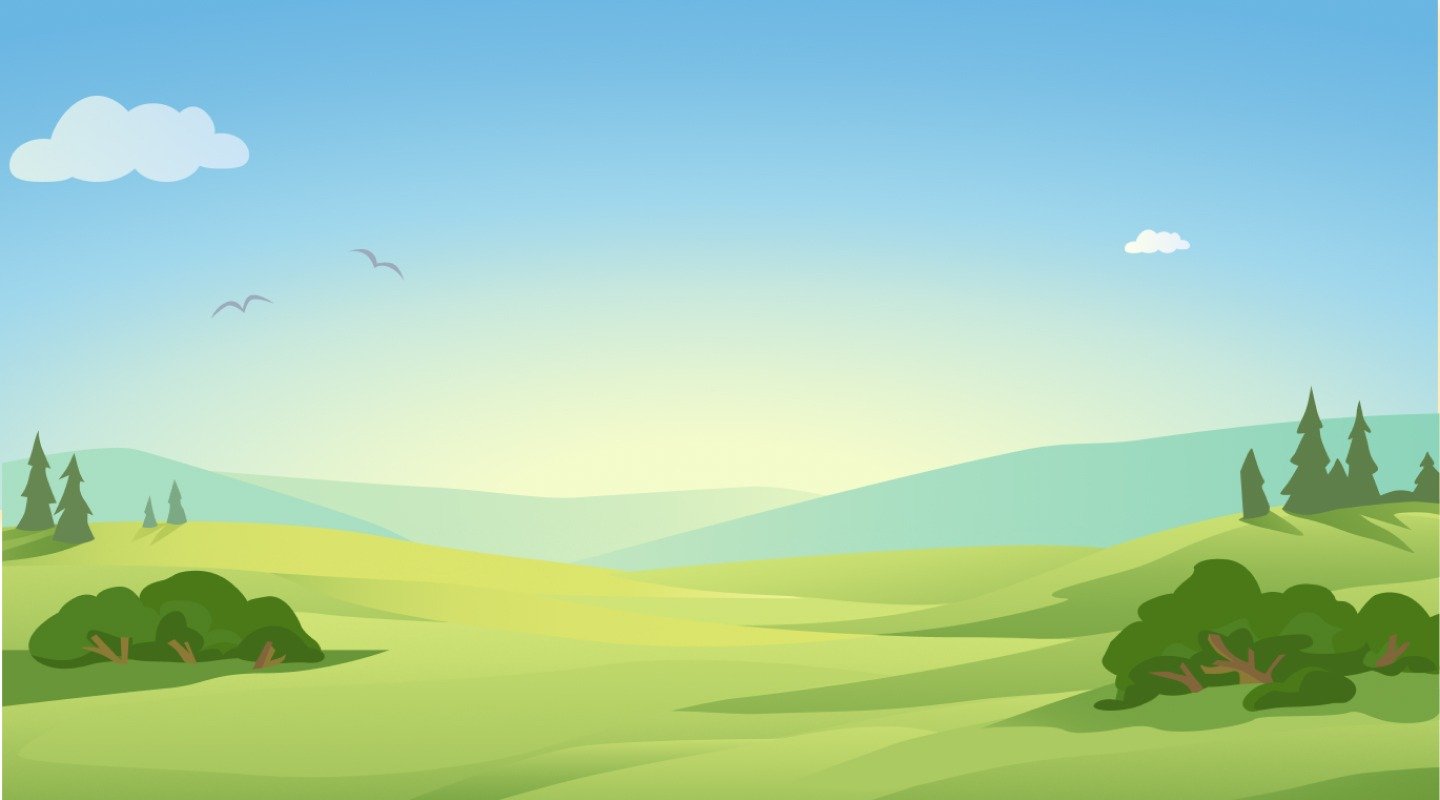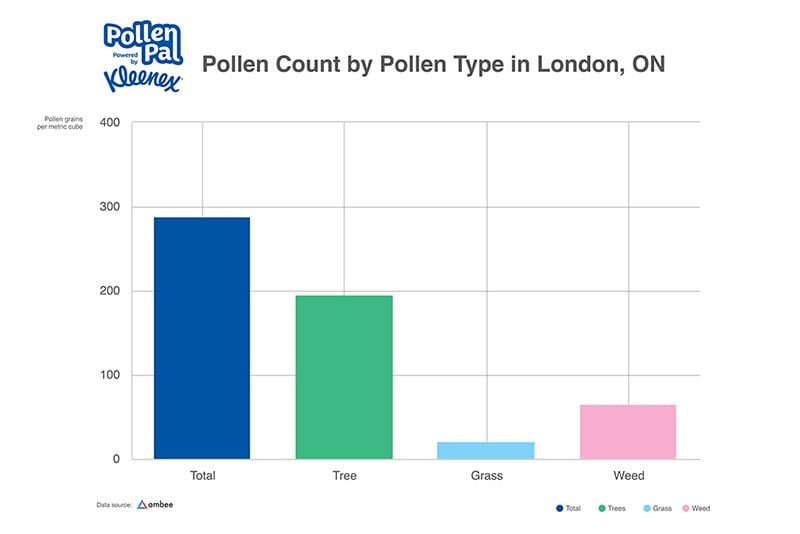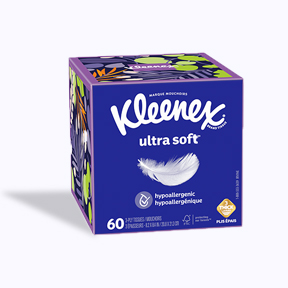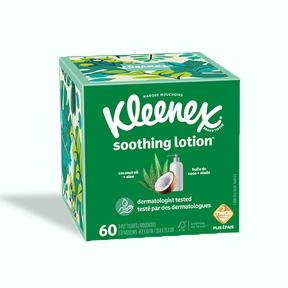


Click here to sign up for alerts
Tap here to sign up for alerts

The pollen forecast for your area
The weather forecast for your area
Discover our hay fever advice and more information about pollen in your area.

Get ahead of pollen with personalized alerts!
Sign up for pollen alertsPollen Count in London, Ontario
What is the pollen count in London today?
Tap in your postal code above to see the pollen count today in London. Use Your Pollen Pal to see if your hay fever allergy will be trigger in specific regions – whether at home, work or out in the park.
Pollen forecast for London
Planning a summer picnic in Victoria Park or a walk along the Thames River? Check out our daily pollen tracker so you know the London pollen count!
Pollen Month-by-Month in London

-
January
With snow covering most of London, this month has a low pollen count. Allergies within January are most likely due to mold or pets. If you’re having trouble distinguishing between hay fever and a winter cold check out our guide to figure out the differences.
-
February
-
March
-
April
-
May
-
June
-
July
-
August
-
September
-
October
-
November
-
December
So long as the freezing temperatures continue in London, pollen seldom makes its presence felt this early in the year.
The first month of spring brings with it the beginning of tree pollen season. Trees in season include Cedars, Hazels, Alders, Elms, Maples, Willows, Poplars, Pines and Oaks.
April showers welcome grass pollen and specifically, Kentucky grass which is the first representative of the upcoming season. Tree pollen remains the dominant pollen producer in London during April.
Kentucky, Bermuda, Johnson, orchard, and Timothy grasses spread their pollen evenly across London, while sycamore trees also pollenate.
In June, pines, birch and oaks are the main producers of tree pollen. Sweet vernal also joins the party, adding its pollen to the other grasses.
In July, grass pollen is peaking in London, while the majority of tree pollen production is coming to an end for another year.
The good news is that tree pollen production has peaked with the exception of a few late bloomers. For London, ragweed is now the dominant pollen producer, along with dock, nettle, mugwort and plantain.
Hay fever season is finally winding down with ragweed on the decline. You can officially take a deep breath of fresh air without the runny noses or itchy eyes – and hopefully, the sun stays around to make the most of it!
With any luck, the last of the weed pollen is on its way out, although some ragweed as well as crab grass may hang around until the first frost of winter in London.
Enjoy the changing leaf colours without your eyes watering: November’s pollen count tends to be low.
December brings the first official day of winter in London, which means traditionally low levels of pollen for the next few months.
Top Causes of Pollen in London
Trees produce pollen in London from March until July. London’s most common tree allergens are Elm, Birch, Walnut, and Poplar trees1. Grass pollen is in the air from April until July as well, followed by weed pollen. Ragweed pollen is the dominant strain in London, beginning in August through September (or until cooler temperatures take over.)

How to Stay Prepared for London’s Allergy Seasons
- Have a pack of Kleenex® Ultra On-the-Go 3-Ply Pocket Facial Tissues ready for whenever seasonal allergies may arise.
- Prevent pollen from reaching your eyes by wearing sunglasses when outdoors.
- Wash your hands as often as possible to remove pollen.
- To trap pollen, use petroleum jelly around your nostrils and your upper lip2.
- When possible, wear a highly protective comfortable mask to filter out allergens and pollen3.
- Change your clothes and shower immediately upon returning home to wash off and remove pollen.
- Nasal breathing exercises have been shown to assist those using the standard nasal sprays, as a natural solution4.
Pollen Hotspots in London
Any of London’s wide open green spaces will be as full of pollen as they are of picnickers: Springbank Park, Victoria Park, and Gibbons Park all pose significant allergen levels for those with hay fever.
Allergy Friendly Activities in London
The highest pollen count in London is typically in May. But tree, grass and weed pollen are all high at different times, so avoiding these green spaces on high pollen days is recommended if you have a hay fever allergy. There are still plenty of hay fever-friendly activities in this historic city:
Only in London
- University of Western Ontario
- East Park water park, arcade, rock climbing, and wave pool
- Labatt Brewery
- Budweiser Gardens
- Covent Garden Market
- Middlesex County Couthouse
Museums
- Museum London
- London Children's Museum
- Museum of Ontario
- The Royal Canadian Regiment Museum
- Museum of Archaeology
Sources:
Pollen Levels
The following table shows the risk level for each type of pollen derived by applying NAB guidelines to our data and taking percentile values from the extended season for each type of pollen.
Severity of pollen is dictated by the PPM number, which stands for Pollen Grains Per Cubic Metre. The weather and time of day can also be a big factor when it comes to how the pollen count can affect you. As pollen falls to the ground when the heat dissipates during the evening, this can mean your seasonal allergy symptoms get worse and is why many allergy sufferers have worse symptoms in the night. On rainy days, you’ll find your allergy symptoms are easier to manage as rain tends to wash pollen away.
- Low
- Moderate
- High
- Critical
Tree Pollen
- 0-95
- 96-207
- 208-703
- 704+
Weed Pollen
- 0-20
- 21-77
- 78-266
- 267+
Grass Pollen
- 0-29
- 30-60
- 61-341
- 342+
Types of Pollen
We’ve taken a closer look at the types of pollen out there to help you narrow down which ones will have you reaching for the tissues.
Show Allergy Season Who’s Boss
Looking for more info on seasonal allergies and symptoms? Check out our latest articles to help you put pollen allergies in their place.
Find Comfort From Allergies with Kleenex®
Seasonal or not, allergy symptoms can take a heavy toll on you. Let Kleenex® facial tissues help relieve some of those symptoms.
View all products
Frequently Asked Questions
- Local Pollen traps, where available.
- Weather data and other anthropogenic factors.
- Vegetation related data around your region.
A tree pollen level above 50 is considered high, while one to 10 is considered low. Be sure to check your local pollen count before venturing outside and plan accordingly.
 Get Pollen Alerts
Get Pollen Alerts



















